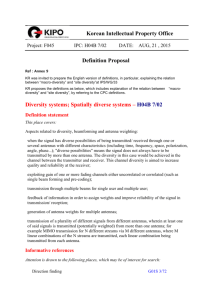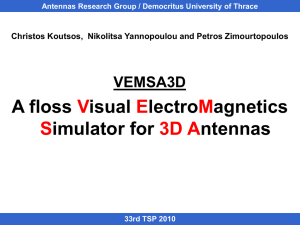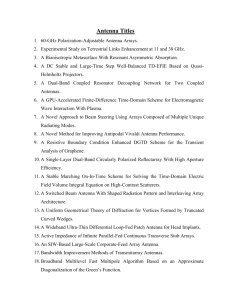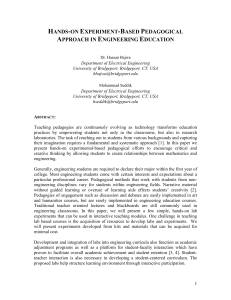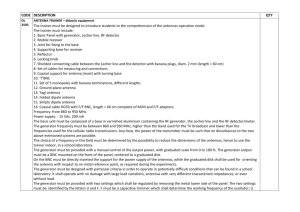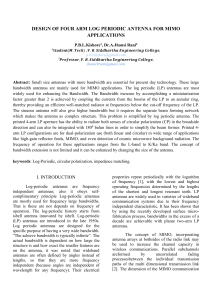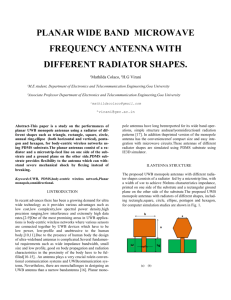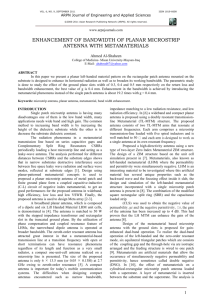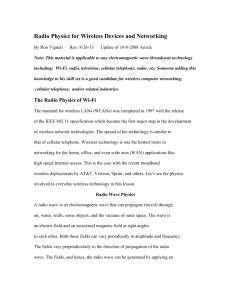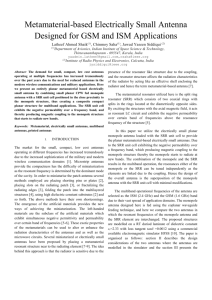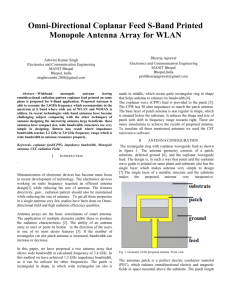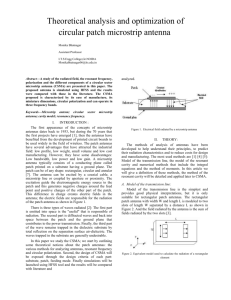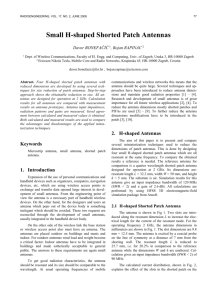MIMiCRA: Metamaterial Inspired Microwave Conformal Radar
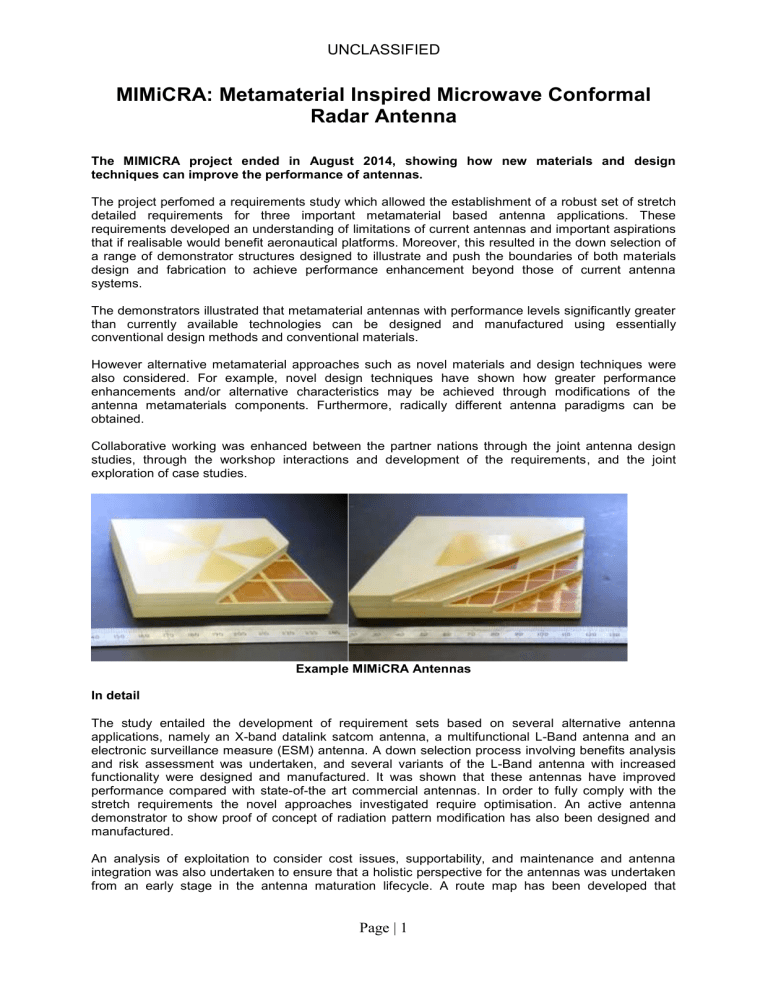
UNCLASSIFIED
MIMiCRA: Metamaterial Inspired Microwave Conformal
Radar Antenna
The MIMICRA project ended in August 2014, showing how new materials and design techniques can improve the performance of antennas.
The project perfomed a requirements study which allowed the establishment of a robust set of stretch detailed requirements for three important metamaterial based antenna applications. These requirements developed an understanding of limitations of current antennas and important aspirations that if realisable would benefit aeronautical platforms. Moreover, this resulted in the down selection of a range of demonstrator structures designed to illustrate and push the boundaries of both materials design and fabrication to achieve performance enhancement beyond those of current antenna systems.
The demonstrators illustrated that metamaterial antennas with performance levels significantly greater than currently available technologies can be designed and manufactured using essentially conventional design methods and conventional materials.
However alternative metamaterial approaches such as novel materials and design techniques were also considered. For example, novel design techniques have shown how greater performance enhancements and/or alternative characteristics may be achieved through modifications of the antenna metamaterials components. Furthermore, radically different antenna paradigms can be obtained.
Collaborative working was enhanced between the partner nations through the joint antenna design studies, through the workshop interactions and development of the requirements, and the joint exploration of case studies.
Example MIMiCRA Antennas
In detail
The study entailed the development of requirement sets based on several alternative antenna applications, namely an X-band datalink satcom antenna, a multifunctional L-Band antenna and an electronic surveillance measure (ESM) antenna. A down selection process involving benefits analysis and risk assessment was undertaken, and several variants of the L-Band antenna with increased functionality were designed and manufactured. It was shown that these antennas have improved performance compared with state-of-the art commercial antennas. In order to fully comply with the stretch requirements the novel approaches investigated require optimisation. An active antenna demonstrator to show proof of concept of radiation pattern modification has also been designed and manufactured.
An analysis of exploitation to consider cost issues, supportability, and maintenance and antenna integration was also undertaken to ensure that a holistic perspective for the antennas was undertaken from an early stage in the antenna maturation lifecycle. A route map has been developed that
Page | 1
UNCLASSIFIED
identifies the evolution of the antennas over a 2030 timeframe and identifies insertion points for various UAV and missile platforms.
Novel materials and processes such as 3D printing have allowed the fabrication of lenses with spatially controlled dielectric properties, and multilayer resonators have been used to manufacture an isotropic antenna.
Multilayer isotropic antenna Superstrate manufactured using 3D printing
Finally, a curved antenna, designed using transformational modelling and using arrays of metamaterials has been fabricated. Various artificial magnetic conductor designs have also been designed to mitigate some of the performance limitations of the antenna demonstrators, such as deterioration in radiation pattern at higher frequencies. Composite structures prepared using casting, extrusion and spraying have been prepared by dispersion of filler particulates into matrix materials and illustrate the variation in dielectric properties achievable.
Who was there
The MIMiCRA project was carried out by a consortium of industrial and academic partners from
Airbus , Dassault Aviation, Thales, Telecom ParisTech, Institut d’Électronique Fondamentale, BAE
Systems, MBDA (UK), Queen Mary College London and Oxford University.
This project was managed and funded by France and the UK in the frame of the Project no B0883
GEM1 ERG of the European Defence Agency.
Page | 2


